 Written by Rod W. Lekey, RN, DCS
Written by Rod W. Lekey, RN, DCS
.png&newwidth=365&maxheight=200) | i222™ UV-C Lamp System View Product |
Nursing homes provide care to some of the most vulnerable populations, including elderly individuals and those with compromised immune systems. Unfortunately, these facilities are also at high risk for the spread of infections, including MRSA (Methicillin-resistant Staphylococcus aureus) and other illnesses. In recent years, there has been a growing interest in the use of UV-C Disinfection Devices as a safe and effective way to reduce the spread of these pathogens.
This article will explore how UV-C light can be used to reduce MRSA and other illnesses, as well as feature RehabMart’s favorite UV-C light for nursing homes.
--------------------------------------------------------------------
--------------------------------------------------------------------
MRSA is a type of bacterial infection caused by a strain of Staphylococcus aureus bacteria that has become resistant to many antibiotics. It can cause mild to severe infections, and it is a particular concern in healthcare settings where vulnerable populations may be at higher risk of infection. Strict infection control measures and appropriate use of antibiotics are required to prevent and control the spread of MRSA.
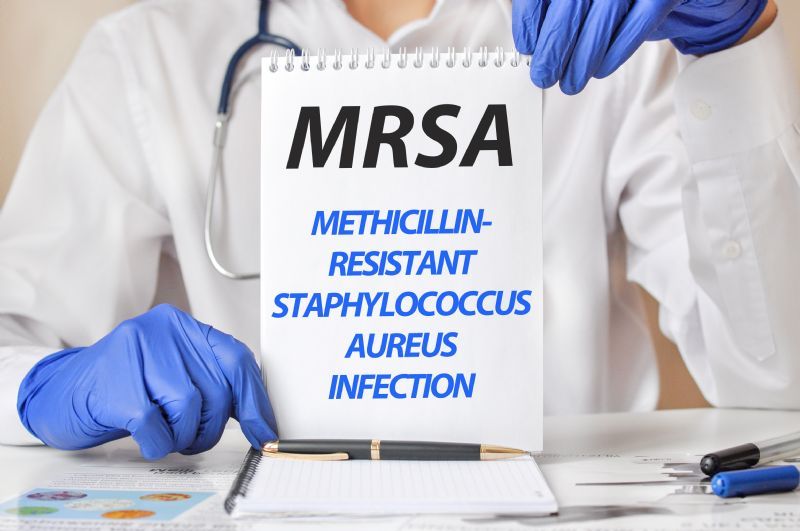
The prevalence of MRSA in nursing homes can vary, but studies have found that it is relatively common. According to a study published in the American Journal of Infection Control in 2021, the prevalence of MRSA among nursing home residents in the United States was 34.2%.
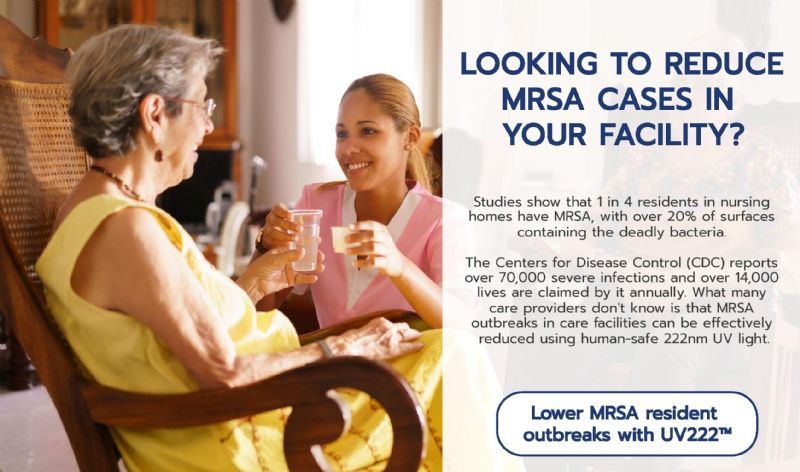
MRSA can spread in nursing homes through direct or indirect contact with an infected person or contaminated surfaces. Infected or colonized residents can shed MRSA bacteria, increasing the risk of transmission to other residents or staff. Improper infection control procedures, such as inadequate hand hygiene and shared equipment or surfaces, can also contribute to the spread of MRSA. Visitors can potentially transmit MRSA if they have the bacteria on their skin or clothing.
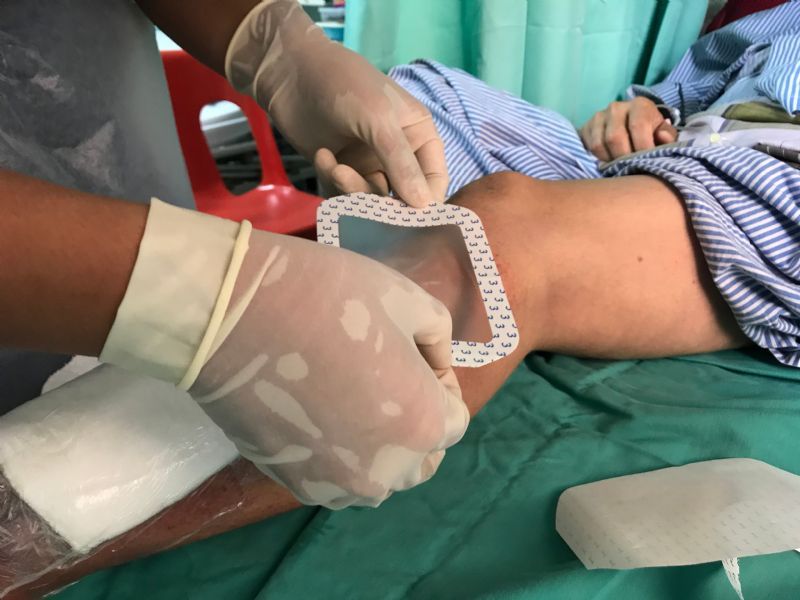
222 nm UV-C light, also known as far-UVC light, has been shown to be effective in killing MRSA bacteria. The light damages the DNA and RNA of the bacteria, which prevents them from reproducing and ultimately leads to their death. However, what makes far-UVC light unique is that it can penetrate and kill bacteria without harming human cells, as the wavelength of 222 nm is not capable of penetrating the outermost layer of the skin or the eyes. This makes it a potentially safer and more practical option for disinfection in public spaces, including nursing homes, where there is a risk of MRSA transmission.
.png&newwidth=365&maxheight=200) | i222™ UV-C Lamp System View Product |
The UV222™ UV-C Lamp System by Med Solutions is an effective solution for reducing air and surface infections. It can be safely used in occupied spaces such as cafeterias, lounges, bedrooms, nurse’s stations, and more.
Designed to be wall-mounted, this device emits 222 nm far UV-C light using a built-in Ushio Care222 filtered lamp, ensuring that only safe wavelengths of light are utilized for disinfection. Additionally, the UV222™ UV-C Lamp System utilizes LIDAR technology to measure the distance to surfaces and adjust the UV-C dosage accordingly based on the occupancy of the room, all while operating within the American Conference of Governmental Industrial Hygienists (ACGIH) Threshold Limit Values (TLV) to maintain safety.
With a 2-year/17,500-hour warranty, the UV222™ is a reliable and long-lasting solution that will help keep shared spaces in nursing homes and other facilities clean and safe.
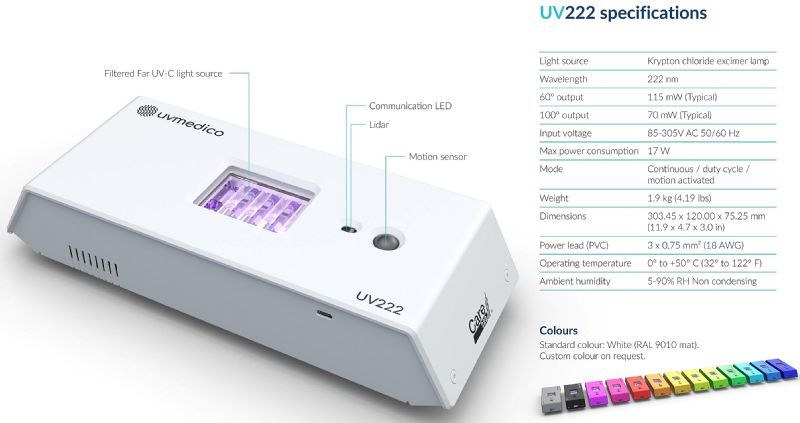
Unlike other forms of UV light, far-UVC light at 222 nm has been shown to be safe for use around people because it can disinfect the air and surfaces without harming human cells or tissues. The 222 nm UV-C light is safe for humans because its wavelength is unable to penetrate the outermost layer of the skin or the eyes, and therefore cannot cause damage to human cells or tissues.
Last year, the White House passed legislation requiring every care home in the U.S. to have an Infection Preventionist (IP) employed and working on-site. This move was made in response to the COVID-19 pandemic, which highlighted the critical need for infection control measures in long-term care facilities. An Infection Preventionist is a healthcare professional with specialized training in preventing and controlling the spread of infectious diseases, and their role is to develop and implement strategies to minimize the risk of infections among residents and staff.
Many Infection Preventionists are turning to UV-C light disinfection due to its effectiveness in killing a wide range of pathogens, including bacteria, viruses, and fungi, without leaving harmful residues. Additionally, 222 nm UV-C light is safe for use in occupied spaces, making it an ideal tool for disinfecting high-traffic areas in healthcare settings.
The use of UV-C light disinfection can be easily incorporated into existing cleaning protocols and can help to supplement and enhance other infection control measures, such as hand hygiene and personal protective equipment use.

UV-C light disinfection has shown great potential in reducing the spread of MRSA and other illnesses in nursing homes. It offers a safe and effective way to disinfect high-touch surfaces and the air in these facilities, without the need for harsh chemicals or leaving harmful residues. However, it's important to note that UV-C light is just one tool in the infection prevention toolkit and should be used in conjunction with other proven measures such as hand hygiene, proper ventilation, and regular cleaning and disinfection. By incorporating UV-C light disinfection as part of a comprehensive infection prevention program, nursing homes can help keep their residents and staff safe and healthy.
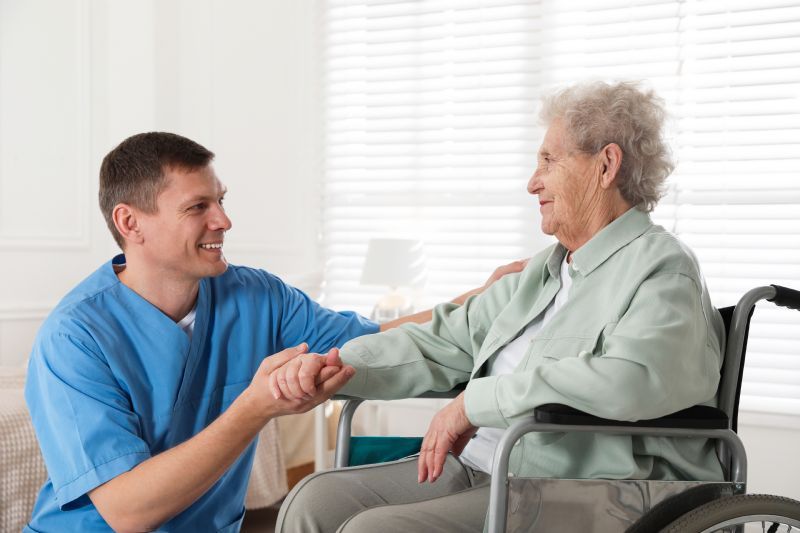

Rod is a registered nurse with previous clinical experience as an EMT-B, hospice provider, and emergency room nurse. He now works as an operating room nurse at a Level I Trauma Center and research hospital, where sanitization and environmental control are absolutely crucial to positive patient outcomes. He spent over 30 years in the military and aerospace industry and holds a doctorate in computer science. He is fascinated with exponential technologies and passionate about their impact on society and culture, with interests in improving healthspan, espousing positive aging, practicing holistic wellness, and increasing functional fitness.